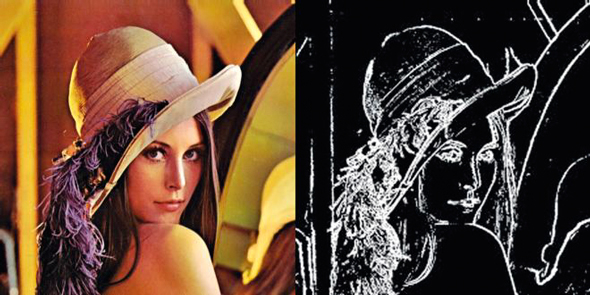By IHTISHAM KABIR
I had spent many hours looking at Lena: her eyes, her hair and her hat. But then, so had dozens of other researchers working in a new field called digital image processing. It was the early 1980s, and while studying for my degree in electrical engineering in the U.S., I was smitten by the photography bug. This presented a dilemma for me because I also enjoyed engineering. While researching an undergraduate class project, I learned about a new field of engineering that was taking photography from the realm of chemistry to the realm of computers and electrical engineering. The nascent science was called digital imaging, and though we did not know it then, one day it would revolutionize photography, bankrupt Eastman Kodak, and place digital cameras in just about everyone’s hands.

The idea was that you converted a regular photograph into a grid of numbers, each number (called a pixel) representing a tiny spot of the photograph. This was a digital image. Then you used the principles of electrical engineering — similar to those used in radar, digital music and ultrasound — to work on the digital image. Voilà! If I pursued digital imaging, I could simultaneously be a photographer and an engineer.
The field was wide open and new discoveries came rapidly, but there were challenges. For example, we needed digital images for testing the theory (remember this was long before digital cameras). Getting a photograph into the computer was a cumbersome and expensive process. Homemade scanners were used to “scan” photographs, and only a few of these scanners existed. Thus, the world’s stock of digital images was rather limited. A closeup photograph of a baboon’s face was one of the popular ones.
One fateful day, imaging scientists at the University of Southern California, tired of repeatedly looking at the same images, decided to scan a photograph from a men’s magazine. It was a photograph of Lena Söderberg, a Swedish model also called Lenna, and it quickly became the favourite “test” photograph used by image processing researchers.

There were several reasons for Lena’s popularity. The photograph contained a mixture of sharp details, flat regions, color and texture which allowed for testing new ideas. No doubt, being the image of an attractive woman also helped. It can be safely said that Lena’s image was used in the invention of many fundamental engineering principles resident in your mobile phone camera, your computer’s image display, your video conferencing program and your digital camera.
But where was the real Lena? Sometime in the mid-1990s, several participants at an image processing conference decided to find out more about her. It turned out she had returned to Sweden after spending some years in Los Angeles. The researchers visited her and discovered that she was a mother of three, working at a state-run organization. She was greatly amused to hear of her celebrity status among imaging scientists and engineers.
Not long afterwards, Playboy magazine, which jealously guards the copyright of its images, stated that it would overlook copyright infringements on the Lena photograph. Her role was recognized at the 50th anniversary meeting of the Society of Imaging Science and Technology where she was hailed as the First Lady of the Internet.
For more on Ihtisham Kabir visit his Facebook page Tangents.


